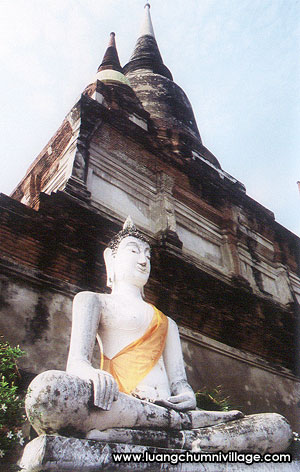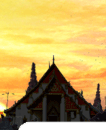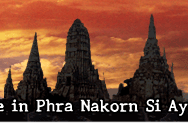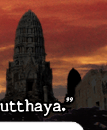
Wat Yai Chai Mongkhon
Located to the Southeast of the island, this temples lofty chedi
is visible from most of the town. The monastery was built in 1900
by King U-thong who granted the temple with the name Wat Pa Kaew.
The intention was to create a center of Buddhist studies (Ceylonese
Sect). As the temple used to be headed by a patriarch, local people
also called it Wat Chao Phraya Thai.
Located to the Southeast of the island, this temples lofty chedi
is visible from most of the town. The monastery was built in 1900
by King U-thong who granted the temple with the name Wat Pa Kaew.
The intention was to create a center of Buddhist studies (Ceylonese
Sect). As the temple used to be headed by a patriarch, local people
also called it Wat Chao Phraya Thai.
The present name was given granted to the temple by King Naresuan
to commemorate a battle fought against the Crown Prince of Burma
in 1592. His momentous victory a single-handed combat on the elephant
back brought independence to Ayutthaya after 15 years as a Burmese
dependent. Within the complex is a huge image of a reclining Buddha
in brick and stucco. The chedi is bell-shaped, about 60 meters high,
constructed on a mound of raised ground (15 X 32.4 X 32.4 m.) with
steps going up to the Buddhist image placed midway to the top. The
chedi itself now has a distinct tilt, but still can be entered via
the stairs.
The Ubosot or ordination hall is windowless but ventilated by pierced
holes stretching down the roof on both walls. Also situated in the
compound is King Naresuans statue, which is highly revered by Thais.
Luang Chumni Village : Bed and
Breakfast ( B&B ) in Ayutthaya, Thailand
|












